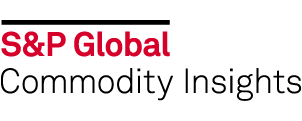
Download Report IHS CEH Report : Vinyl Chloride Monomer (VCM) (Chemical Economics Handbook 2019)
PDF by S&P Global Commodity Insights; IHS Markit
Information
Format: PDF Language: English Pages: 72 Publisher: S&P Global Commodity Insights; IHS Markit Publication Date of the Electronic Edition: 2019
?
ISBN: 121831
$49
Delivery time: Maximum 24 hours
Description
Vinyl chloride monomer (VCM) is an important industrial chemical used almost exclusively to produce polyvinyl chloride (PVC) resins; therefore, VCM follows the PVC market trend very closely. The vinyls chain—ethylene dichloride (EDC), vinyl chloride monomer (VCM), and polyvinyl chloride (PVC)—is a key component of the global petrochemical and thermoplastics sectors.
VCM production is based mainly on the ethylene feedstock route, except in China, where the acetylene-based capacity dominates. In the ethylene process, EDC is produced by direct chlorination from chlorine and ethylene and is, in turn, cracked to produce VCM. The manufacture of VCM also results in the release of by-product hydrogen chloride, which is typically recycled to produce EDC by oxychlorination with additional ethylene. VCM is then polymerized to produce PVC. In the acetylene process, however, no EDC is involved; instead, VCM is produced directly from acetylene, which in turn is produced from coal-based calcium carbide. China is now the only country with major acetylene-based VCM/PVC facilities, but because of the scale of the Chinese vinyls industry and its large coal resources, the acetylene route still accounts for a significant portion of total global VCM/PVC production capacity.
During the last five years, VCM capacity grew at 0.6% annually, increasing from about 53.5 million metric tons in 2013 to 55.0 million metric tons in 2018. Northeast Asia dominated global VCM capacity expansion, accounting for nearly half of the new capacity brought onstream over the last five years; in 2018, the region accounted for nearly 55% of global VCM capacity. Northeast Asia will continue to be largest player in the VCM market over the next five years, as the region plans to add nearly 2.6 million metric tons of new VCM capacity during the forecast period; the majority (94%) of this expansion will take place in China. The largest expansions in the region will come from Cangzhou Julong, Qingdao Haiwan, and Yantai Wanhua, each of which is expected to add 400,000 metric tons or more by 2023. Overall, global VCM capacity is projected to grow at an average of 2.0% per year, reaching nearly 60.9 million metric tons by the end of the forecast period.
VCM consumption is highly dependent on the PVC market, since over 99% of the world's VCM demand is consumed for PVC production. Demand for PVC is closely aligned with the economic development growth of a country. The construction industry is a significant demand driver, because PVC pipes, fittings, siding, and wire and cable are some of the basic requirements for building most infrastructure. Northeast Asia is also largest global consumer of VCM, with China driving the region, contributing 41% of total global VCM consumption in 2018. North America is the second-largest market, with the United States accounting for 16% of global consumption; Western Europe follows as the next-largest market with 11% of global VCM demand in 2018. Northeast Asia is anticipated to continue the trend and remain the largest regional market for VCM and PVC, led by China as the primary demand driver for the foreseeable future.
VCM trade is challenging because of logistics, as VCM is a gas that needs to be shipped and stored liquefied under pressure, requiring expensive LPG ships for its transportation. In 2018, around 3.2 million metric tons of VCM were traded globally, representing about 7% of the total market; volumes have increased at 2.0% per year on average since 2013. North America is the largest exporter of VCM, accounting for about 42% of global exports in 2018. The low price for energy is one of the biggest advantages North America has relative to the rest of the world; the lower feedstock cost has helped US vinyl producers maintain a competitive cost advantage. Northeast Asia is the second-largest VCM exporter; the majority of trade is interregional (to China), with Japan and Taiwan dominating over 96% of the region's total. The Middle East is also an important source of the world's VCM export supply, with the advantage of low-cost production located near major markets. The major importers are China, India, and Southeast Asia. Over the next five years, global VCM trade is projected to decline by 0.7% per year, as the trend moves toward a greater integration of assets.
$49
Delivery time: Maximum 24 hours
